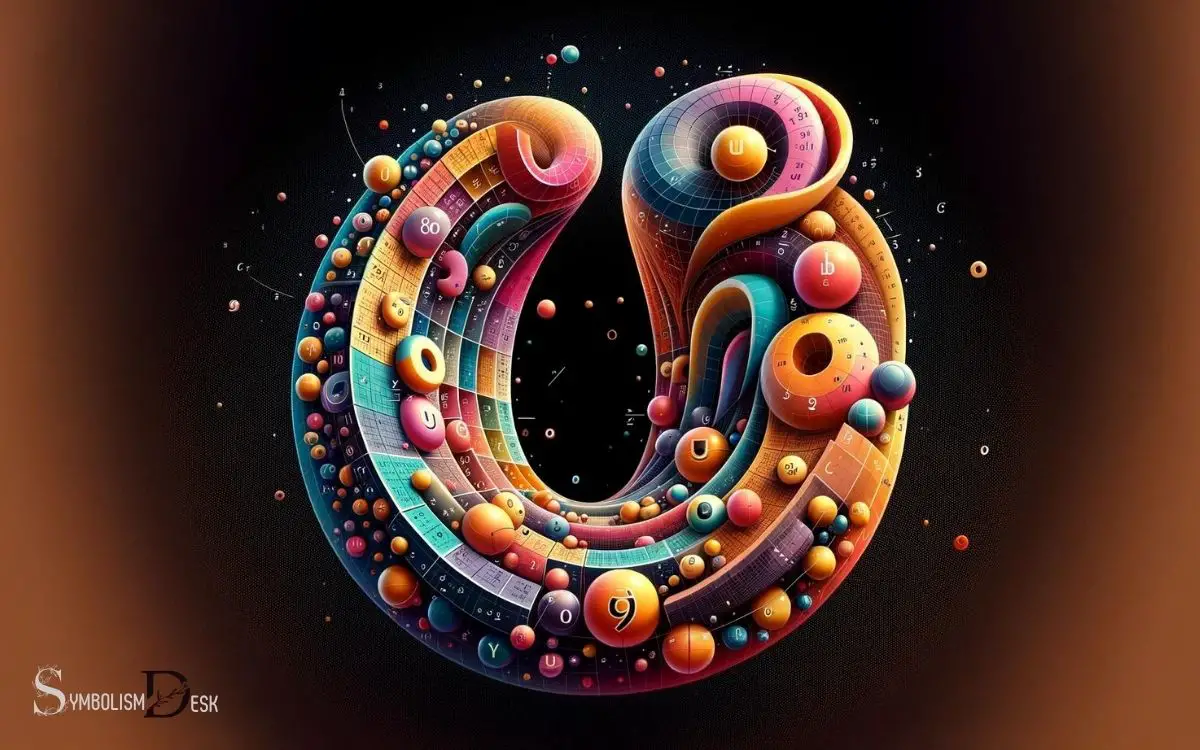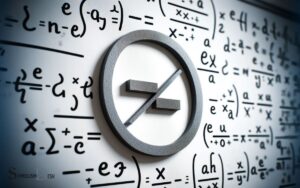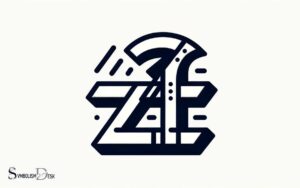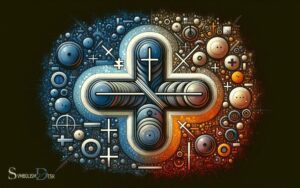Big U Symbol in Math: More Sets!
The big U symbol in mathematics, denoted as ∪, represents the union of two or more sets.
It is used to combine all the elements from the given sets, without duplicating any elements, to form a new set. This operation is key to set theory and has applications across various branches of mathematics.
The union of sets is an operation that takes two or more sets and creates another set containing all the elements that are in at least one of the sets. For example, if Set A = {1, 2, 3} and Set B = {3, 4, 5}, then A ∪ B = {1, 2, 3, 4, 5}.
Here are some key points:
Understanding the union symbol ∪ is essential for solving complex problems in set theory and its applications.

Key Takeaway
Understanding the Union Symbol (∪) in Set Theory | Math Operations
| Operation | Symbol | Description | Example | Result |
|---|---|---|---|---|
| Union | ∪ | Combines all elements from two or more sets, excluding duplicates. | A = {1, 2}, B = {2, 3} | A ∪ B = {1, 2, 3} |
| Intersection | ∩ | Creates a set with elements common to all included sets. | A = {1, 2}, B = {2, 3} | A ∩ B = {2} |
| Difference | \ | Contains elements from one set that are not in the other set. | A = {1, 2}, B = {2, 3} | A B = {1} |
| Symmetric Difference | Δ | Contains elements that are in either of the sets, but not in both. | A = {1, 2}, B = {2, 3} | A Δ B = {1, 3} |
| Complement | Ac | Consists of all elements not in the set, within a universal set U. | A = {1, 2}, U = {1, 2, 3, 4} | Ac = {3, 4} |
Origins of the Big U Symbol
The origins of the big U symbol in mathematics can be traced back to its introduction in the field of set theory by Georg Cantor in the late 19th century.
Cantor, a German mathematician, is renowned for his groundbreaking work on the theory of sets and the development of the concept of cardinality.
Within this context, the big U symbol, often used to represent the union of sets, emerged as a fundamental notation.
Its adoption provided mathematicians with a concise and precise means of denoting the combination of multiple sets.
This symbol has since become a ubiquitous element in mathematical notation, employed in various branches of mathematics, including but not limited to set theory, probability, and statistics.
Its introduction represents a pivotal moment in the history of mathematical symbolism, facilitating the expression of complex concepts with simplicity and clarity.
Basic Properties of the Big U Symbol
When and how is the big U symbol used as a fundamental notation in mathematics? The big U symbol, denoted as ∪, represents the union of sets in mathematics.
It is a fundamental concept in set theory and plays a crucial role in various branches of mathematics, including probability, statistics, and discrete mathematics.
The basic properties of the big U symbol include the commutative property, which states that the union of two sets is independent of the order in which the sets are written; the associative property.
Which asserts that the union of three or more sets is independent of how the sets are grouped; and the idempotent property, which states that the union of a set with itself remains unchanged.
Understanding these properties is essential for manipulating and solving problems involving sets and is fundamental to many mathematical proofs and concepts.
Set Operations Involving the Big U Symbol
Set operations involving the big U symbol encompass the manipulation and combination of sets using the union operation.
- The union of sets A and B, denoted A ∪ B, comprises all elements that are in A, in B, or in both A and B.
- For example, if A = {1, 2, 3} and B = {3, 4, 5}, then A ∪ B = {1, 2, 3, 4, 5}.
- The union operation is commutative, meaning A ∪ B = B ∪ A, and associative, i.e., (A ∪ B) ∪ C = A ∪ (B ∪ C).
- For instance, if A = {1, 2} and B = {2, 3}, then A ∪ B = {1, 2, 3}, and B ∪ A = {1, 2, 3}.
- When dealing with multiple sets, the union operation extends to more than two sets, as in A ∪ B ∪ C.
Understanding set operations involving the big U symbol is fundamental in various mathematical contexts.
Venn Diagrams and the Big U Symbol
The use of Venn diagrams provides a visual representation of the relationships between sets and their elements. These diagrams illustrate the concept of intersection and union through the overlap and combination of different sets.
Symbolic set representation in Venn diagrams allows for a clear depiction of the relationships between sets and the application of the Big U symbol to represent the union of sets.
Symbolic Set Representation
How can symbolic set representation, including Venn diagrams and the Big U symbol, effectively depict relationships between sets in mathematics?
- Venn Diagrams: Venn diagrams visually display the relationships between sets by using overlapping circles or other shapes to represent the logical connections between different sets.
- Intersection: The overlapping areas in Venn diagrams represent the intersection of sets, showing the elements that are common to both sets.
- Union: The entire area enclosed by all the circles in a Venn diagram represents the union of all the sets involved, showing all the elements within those sets.
- Complement: Venn diagrams also allow for the representation of the complement of a set, showing the elements not included in a particular set.
This symbolic set representation provides a clear and intuitive way to understand the relationships between sets in mathematics, setting the stage for the subsequent section about ‘intersection and union’.
Intersection and Union
Depicting the relationships between sets in mathematics, the use of Venn diagrams and the Big U symbol offers a concise and intuitive visual representation.
Venn diagrams illustrate the intersection and union of sets. The intersection of sets A and B, denoted as A ∩ B, represents the elements that are common to both sets.
In contrast, the union of sets A and B, denoted as A ∪ B, encompasses all elements present in either set.
The Big U symbol visually signifies the union of sets and is particularly effective in illustrating the combination of multiple sets.
These visual tools are essential in understanding set theory, aiding in the comprehension of complex relationships between sets and providing a foundation for various mathematical concepts and problem-solving scenarios.
Applications in Probability and Statistics
Frequently used in probability and statistics, the big U symbol represents the union of sets and is a crucial concept in mathematical modeling. Its applications in probability and statistics are fundamental to various fields, including data analysis and decision making. Here are some key applications:
Probability Theory:
- The big U symbol is used to denote the union of events in probability theory, allowing for the calculation of combined probabilities.
Statistical Analysis:
- In statistical analysis, the big U symbol is employed to represent the union of different datasets or populations, enabling comprehensive comparisons and evaluations.
Data Science:
- Data scientists utilize the big U symbol to merge datasets, facilitating comprehensive analysis and interpretation of complex real-world data.
Big U Symbol in Discrete Mathematics
The big U symbol in discrete mathematics is frequently used to denote the union of sets, a fundamental concept in set theory. In this context, the symbol represents the collection of all distinct elements from the sets being combined. Another important mathematical symbol used in set theory is the intersection symbol (∩), which denotes the overlap or common elements between sets. Both the union symbol and the intersection symbol play crucial roles in various mathematical and logical operations involving sets. It is essential for students and practitioners of discrete mathematics to have a strong understanding of these fundamental concepts and the corresponding mathematical symbol: U.
Understanding the precise application of the big U symbol is essential for various discrete mathematical operations and proofs.
Representing Union of Sets
The union of sets, represented by the Big U symbol in discrete mathematics, plays a crucial role in combining elements from multiple sets into a single set.
When representing the union of sets:
- The union of sets A and B, denoted as A ∪ B, includes all elements that are in set A, set B, or both.
- For example, if set A = {1, 2, 3} and set B = {3, 4, 5}, then A ∪ B = {1, 2, 3, 4, 5}.
- The union of multiple sets can be represented using the Big U symbol with subscript notation. – For instance, the union of sets A, B, and C can be denoted as A ∪ B ∪ C.
The union of sets is fundamental in various mathematical operations, such as in the study of Venn diagrams and in solving problems related to probability and statistics.
Use in Set Theory
In Set Theory, the Big U symbol in discrete mathematics represents the union of sets, combining their elements into a single set. In Set Theory, the Big U symbol in discrete mathematics represents the union of sets, combining their elements into a single set. The union of two sets, A and B, includes all elements that are in either A, B, or both. For those unfamiliar with this notation, the “weird u symbol meaning” might seem unclear at first, but it simply reflects the idea of bringing together all unique elements from the sets involved. This operation is fundamental in various fields of mathematics, computer science, and logic.
The union of sets A and B, denoted as A ∪ B, contains all the elements that are in A, in B, or in both. This concept is fundamental in understanding the relationships and operations between sets.
The table below illustrates the union of sets A and B:
| Set A | Set B | A ∪ B |
|---|---|---|
| 1, 2, 3 | 3, 4, 5 | 1, 2, 3, 4, 5 |
In this example, the union of sets A and B includes all the distinct elements from both sets, without repetition. Understanding the Big U symbol is crucial for various mathematical applications, particularly in the field of discrete mathematics.
Big U Symbol in Algebraic Expressions
When using algebraic expressions, the big U symbol is commonly employed to denote the union of sets.
In algebra, the big U symbol has significant applications and implications, including:
- Set Notation: The big U symbol is used to represent the union of two or more sets in algebraic expressions.
- Inclusive Or: In algebra, the big U symbol can also be interpreted as an “inclusive or” operation when used in logical expressions.
- Algebraic Manipulations: The big U symbol is utilized in algebraic expressions to perform operations such as simplifying, expanding, or solving equations involving unions of sets.
These applications demonstrate the versatility and importance of the big U symbol in algebraic expressions, providing a concise and powerful notation for set operations and logical expressions.
Understanding these fundamental uses sets the stage for further exploration of advanced concepts and extensions of the big U symbol.
Advanced Concepts and Extensions of the Big U Symbol
Advanced algebraic courses often revisit the applications and intricacies of the big U symbol with greater depth and complexity. One advanced concept involves the use of the big U symbol in set theory to represent the union of multiple sets.
In this context, the big U symbol signifies the combination of all elements from the sets under consideration, without repetition.
Furthermore, extensions of the big U symbol may include its application in probability theory, where it represents the union of events. In advanced calculus, the big U symbol can be employed to denote a sequence of partial sums in series.
Additionally, in advanced algebraic structures such as rings and fields, the big U symbol may have specific properties and applications, further expanding its utility in mathematical discourse.
Conclusion
The big U symbol has its origins in set theory and is used in various mathematical disciplines such as probability, statistics, discrete mathematics, and algebra. Its basic properties allow for set operations and its representation in Venn diagrams.
Advanced concepts and extensions of the big U symbol further demonstrate its versatility in mathematical applications. Its significance in mathematics cannot be understated, making it a fundamental symbol in mathematical notation.






